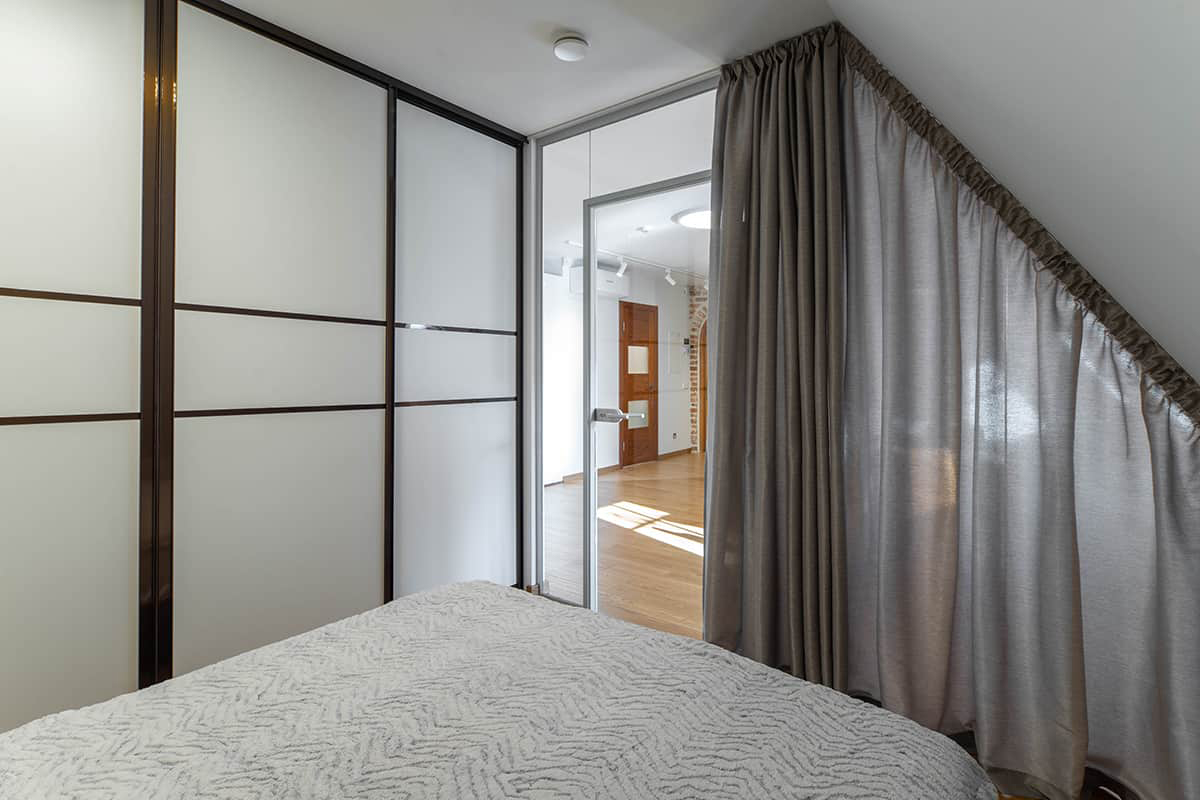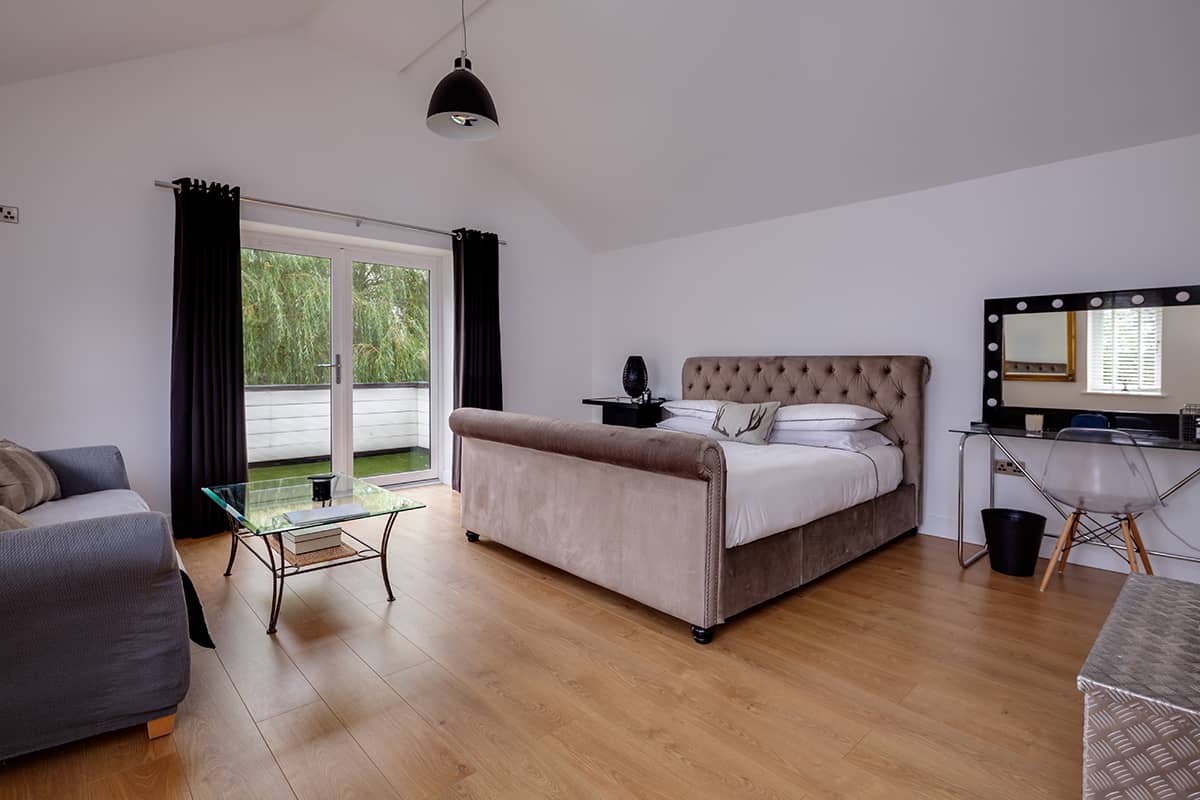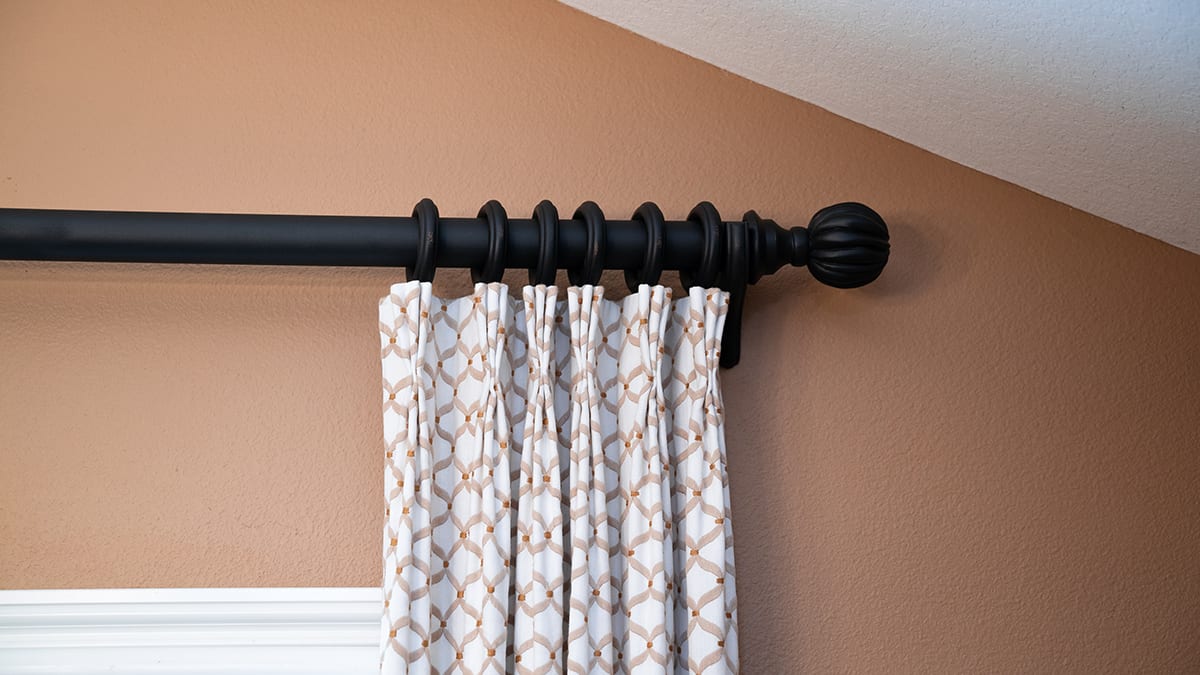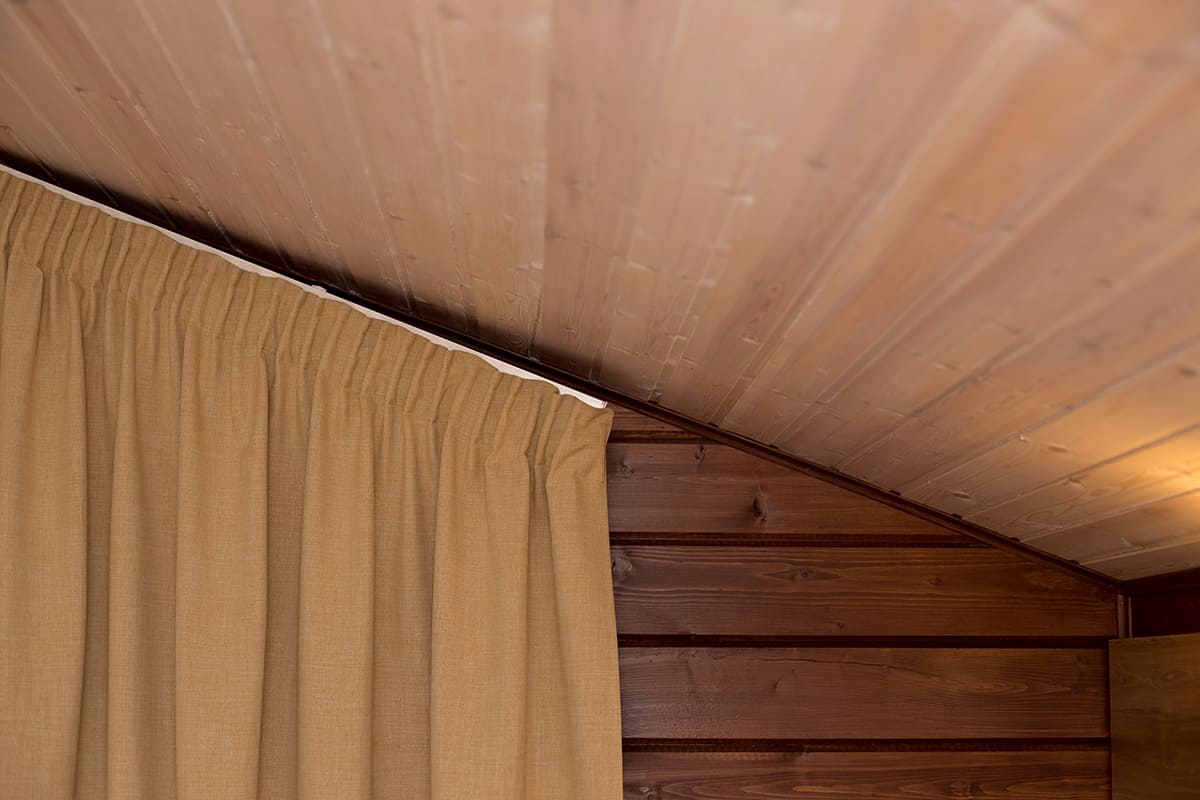If you have a sloped or slanted ceiling, then the prospect of hanging curtains might seem more tricky than usual.
Fortunately, you can hang curtains from sloped ceilings in various ways without too much trouble. Here we investigate how to hang curtains from a slanted ceiling.
Embrace or Ignore the Slant
Before installing curtains on a slanted or vaulted ceiling, you need to decide if you want the curtains to hang completely level or if you also want them to run on a slant.
If your ceiling is slanted, but your windows are not, then you can easily ignore the slant and simply hang your curtains from a straight rod as you normally would, running parallel to the top frame of the window. However, if your window is also slanted in line with your ceiling, then you’ll need to hang your curtains at a corresponding slanted angle.
The important point here is that the curtain rod and, therefore, the top of the curtains are always running parallel to either the slant of the ceiling or the line of the window frame. There is no right or wrong choice between the two; as long as the curtain rod has a parallel point of reference, then you can choose whichever option you prefer.
In most cases, if possible, it is easier to hang the curtains parallel to the window frame so that the fabric of the curtains covers all of the glass rather than runs in a slanted line across it.
Specialist Curtain Rods
If you have a slanted ceiling, then you can buy a slanted curtain rod that will work in conjunction with this. You can also get extender brackets that can attach to the slanted ceiling and hold the curtain rod at a lower angle if you don’t have enough wall space between the ceiling and the window.
Another brilliant solution for installing curtains on a slanted ceiling is an angled curtain rod adapted, which is fixed to the wall or ceiling and then swivels in various directions so that you can adjust it to the exact angle you need for it to hold the sloping curtain rod.
The main drawback of specialist curtain rods for these sorts of scenarios is that they tend to be much more expensive than regular curtain rods.
This is always the case with any specialist equipment you buy because it is much more niche, and therefore, there is little demand for it, so retailers are able to charge a higher price.
Regular Curtain Rods
If you have a slanted ceiling, you might automatically think you need a specialist curtain rod to hang your curtains, and while this can be a good solution, it is not the only way to hang curtains from a sloped surface. Regular curtain rods can also be tweaked or used in specific ways so that they are perfect for hanging curtains on slanted ceilings.
If you only have one slant, then you can use a regular straight curtain rod. You can install the brackets into the wall that runs immediately beneath the slanted ceiling, or you can install the brackets on the ceiling itself before fixing the rod in place and adding the curtains.
You can use a corner curtain rod if you have two slanted ceilings together that make a peak or an upside-down ‘V’ shape. These curtain rods are designed for use in bay windows or corner windows, but they are ideal for use on a double-slanted ceiling. Once again, the brackets can be fixed onto the wall beneath the ceiling or on the ceiling itself, depending on your preference.
The corner of the rod will be pointed into the peak of the ceiling, creating a perfect place for curtains to be hung from a sloped ceiling. Typically, corner curtain rods will come with the corner shape in a right angle, but if your peaked slanted ceiling doesn’t make the perfect right angle, this isn’t an issue.
Make sure you buy a metal corner curtain rod because then you can gently bend it to the angle you require without it snapping or breaking. Ensure the angle results in the straight part of the curtain rods running parallel to the slope of the ceiling.
Curtains for Decoration or Function
If your curtains are to be hung from a slanted ceiling and you only want them for decoration to frame the window or style a room, then you shouldn’t encounter any issues. The curtains can be draped to the side using curtain tie-backs, and they will look great. However, if you want your curtains to create privacy or block out light when they are closed, then this can be a problem with a slanted ceiling.
Obviously, if your curtains are being lifted up at one end in line with a slanted ceiling, then the fabric is going to be lifted up off the floor at the same angle. This is going to look very odd and will most likely mean that some of your windows is exposed, therefore letting light in when you don’t want it or ruining the potential for privacy.
In this scenario, you would need to have curtains custom-made for a slanting ceiling. These curtains are not composed of rectangular panels but have hems that are slanted at the same angle as the ceiling.
If you are handy with a sewing machine, then you could upcycle some curtains you already have to turn them into sloping curtains since custom-made curtains can be extremely expensive, especially when they are not a standard shape.
Permanent or Semi-Permanent
How you hang curtains from a slanted ceiling will also depend on how permanent you want your fixtures to be. Sometimes, you may not want to drill into the walls or ceiling to install curtain rod brackets. For example, if you rent a home and don’t want to make holes or cause damage, you could be fined.
There are ways to hang curtains from slanted ceilings less permanently if you think you might be taking the curtains down again in the not-too-distant future.
Self-adhesive wall or command hooks are ideal for semi-permanent curtain hanging solutions. These have sticky backs that adhere to the surface of the wall or ceiling and can take the weight of a curtain rod along with a set of curtains.
If you plan to do this, be sure to weigh your curtains beforehand and choose a set of self-adhesive wall hooks that are designed to hold steady under that amount of weight and pressure. Otherwise, you will have a curtain that keeps frustratingly falling down.
When you no longer need the curtains hanging from the slanted ceiling, you can peel the self-adhesive hook off the wall and reveal a perfectly kept wall surface behind with no damage or sign that it was ever there.
These types of adhesive solutions are also a good choice if you want to hang curtains from your ceiling but don’t have the tools or experience required to drill and screw curtain rod brackets into place.









